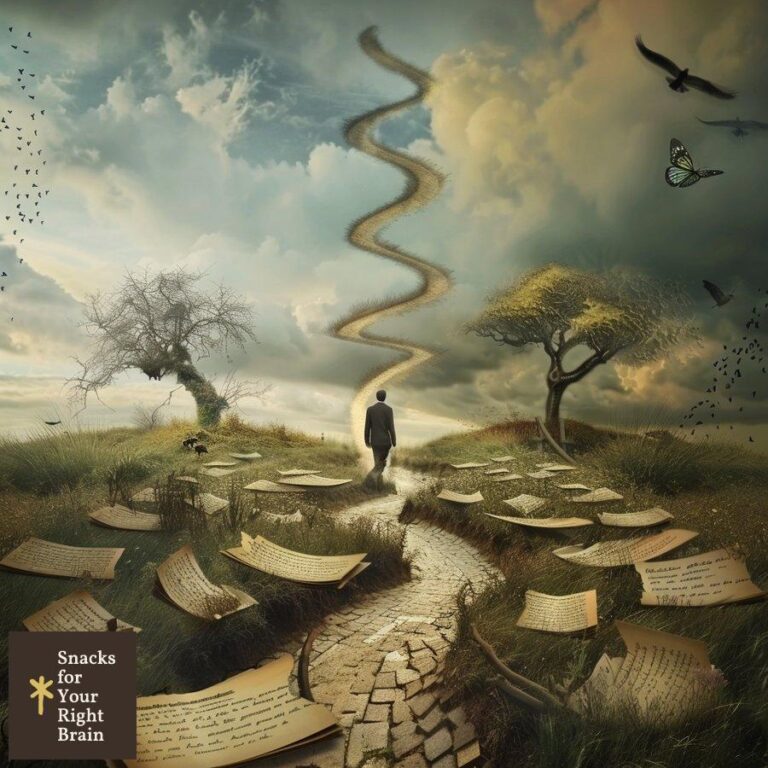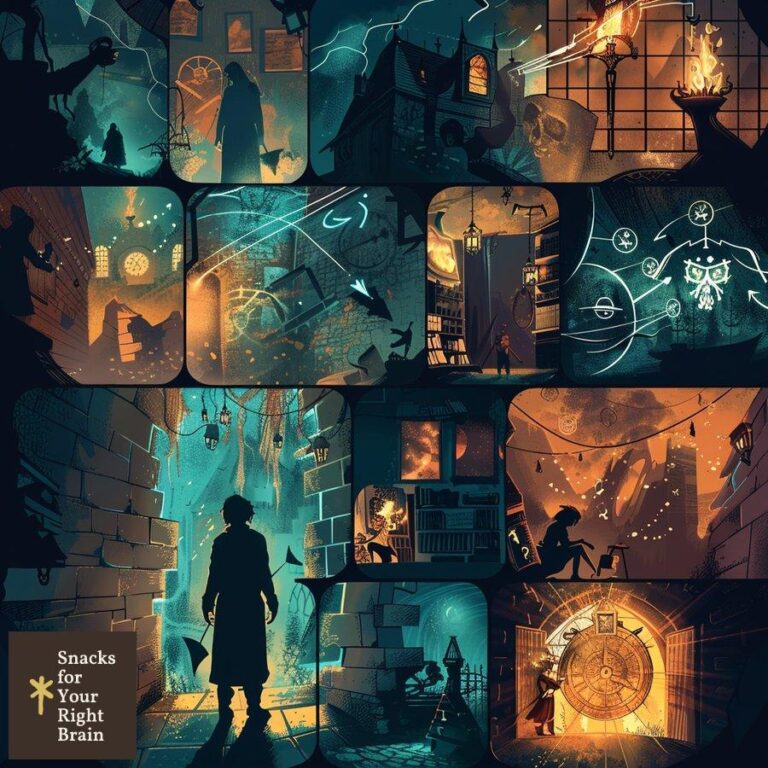What Are the Three Types of Foreshadowing
What is foreshadowing in literature?
Foreshadowing is a literary device that authors employ to hint at or allude to future events, revelations, or plot developments in a story. It involves the strategic placement of clues, hints, or suggestions that subtly prepare readers for what is to come, without revealing too much. Foreshadowing creates a sense of anticipation, suspense, and intrigue, as readers try to piece together the puzzle and predict what will happen next. It is a powerful tool in the writer’s arsenal, used to engage readers, build tension, and create a more immersive and satisfying reading experience.
Why do authors use foreshadowing?
Authors use foreshadowing for several key reasons:
-
To create suspense and intrigue: Foreshadowing piques readers’ curiosity and keeps them engaged, as they try to figure out what will happen next.
-
To build tension and anticipation: By hinting at future events, foreshadowing creates a sense of tension and anticipation, heightening the emotional impact when those events finally occur.
-
To establish a sense of foreboding: Foreshadowing can be used to create a sense of unease or foreboding, subtly warning readers that something ominous or tragic is on the horizon.
-
To reveal character motivations: Foreshadowing can be used to hint at a character’s true intentions or reveal their inner thoughts and feelings, providing insight into their motivations.
-
To connect plot elements: Foreshadowing helps to tie together different plot elements, creating a cohesive and interconnected narrative.
-
To foreshadow themes: Foreshadowing can be used to hint at the themes that will be explored in the story, preparing readers for the deeper messages and ideas that will be conveyed.
By using foreshadowing effectively, authors can create a more engaging, suspenseful, and meaningful reading experience for their audience.
What is direct foreshadowing?
Direct foreshadowing is a type of foreshadowing where the author explicitly hints at or states what will happen in the future. This can take the form of a character making a prediction, a narrator providing a warning, or a specific event being mentioned that will occur later in the story. Direct foreshadowing is more overt and obvious than other types of foreshadowing, and it is often used to create a sense of foreboding or to prepare readers for a significant plot twist or revelation. While direct foreshadowing can be effective in creating suspense and intrigue, it can also be less subtle and more predictable than other forms of foreshadowing.
How does indirect foreshadowing work?
Indirect foreshadowing, also known as subtle foreshadowing, is a type of foreshadowing where the author hints at future events in a more subtle and indirect way. Instead of explicitly stating what will happen, indirect foreshadowing uses symbolism, metaphor, or other literary devices to suggest or imply future events. This can take the form of a character’s actions or behavior, the setting or atmosphere of a scene, or even the use of specific objects or images. Indirect foreshadowing requires readers to pay close attention and make inferences based on the clues provided, which can make the reading experience more engaging and rewarding. However, indirect foreshadowing can also be more difficult to interpret and may require multiple readings to fully appreciate.
What characterizes symbolic foreshadowing?
Symbolic foreshadowing is a type of indirect foreshadowing that uses symbols or symbolic imagery to hint at future events or themes. In symbolic foreshadowing, an object, image, or event is imbued with a deeper meaning or significance that points to something that will happen later in the story. For example, a character’s recurring dream about a dark forest could symbolize the challenges and dangers they will face in the future. Symbolic foreshadowing often relies on cultural or personal associations and can be highly subjective, as different readers may interpret the same symbol in different ways. However, when used effectively, symbolic foreshadowing can add depth and complexity to a story, allowing authors to convey multiple layers of meaning and hint at future events in a more subtle and evocative way.
How can writers implement direct foreshadowing?
Writers can implement direct foreshadowing in several ways:
-
Having a character make a prediction or warning: A character can explicitly state what they believe will happen in the future, creating a sense of anticipation and foreboding for readers.
-
Using a narrator’s voice: The narrator can directly address readers and provide hints or warnings about future events, building suspense and intrigue.
-
Mentioning future events: Writers can directly reference specific events that will occur later in the story, preparing readers for what’s to come.
-
Foreshadowing through dialogue: Characters can discuss or reference future events in their conversations, providing clues and hints to readers.
-
Using foreshadowing in titles or chapter headings: The title of a story or chapter can directly reference a future event, creating a sense of anticipation and intrigue.
While direct foreshadowing can be an effective tool for creating suspense and intrigue, it’s important for writers to balance clarity and subtlety. Too much direct foreshadowing can feel heavy-handed or predictable, while too little can leave readers feeling confused or disengaged. The key is to strike a balance, providing enough direct foreshadowing to create a sense of anticipation and intrigue, while still leaving room for surprise and revelation.
What techniques create effective indirect foreshadowing?
Writers can use several techniques to create effective indirect foreshadowing:
-
Symbolism: Using objects, images, or events that represent or suggest future events or themes.
-
Metaphor and simile: Drawing comparisons between seemingly unrelated things to hint at future events or themes.
-
Repetition: Repeatedly mentioning or referencing certain objects, images, or events to create a sense of significance and hint at their future importance.
-
Juxtaposition: Placing two seemingly unrelated events or images side by side to suggest a connection or hint at future events.
-
Foreshadowing through character actions or behavior: Observing a character’s actions or behavior and using them to hint at future events or reveal their true intentions.
-
Foreshadowing through setting or atmosphere: Using the setting or atmosphere of a scene to create a sense of foreboding or hint at future events.
-
Foreshadowing through dialogue: Having characters discuss or reference events or themes that hint at future events or revelations.
Effective indirect foreshadowing requires writers to be subtle and strategic in their use of these techniques. It’s important to provide enough clues and hints to create a sense of anticipation and intrigue, while still leaving room for surprise and revelation. Writers should also be mindful of the cultural and personal associations that readers may bring to their interpretation of symbols and metaphors, and aim to create a sense of universality and resonance in their use of these devices.
How can symbolic foreshadowing be crafted in writing?
Crafting effective symbolic foreshadowing requires writers to carefully consider the symbols and symbolic imagery they use, and how they can be used to hint at future events or themes. Here are some tips for crafting symbolic foreshadowing:

-
Choose symbols that are meaningful and resonant: Select symbols that have a clear connection to the themes or events you want to foreshadow, and that will resonate with readers on a personal or cultural level.
-
Use symbols consistently: Once you’ve chosen a symbol, use it consistently throughout the story to reinforce its significance and hint at its future importance.
-
Provide context and explanation: While it’s important to be subtle, it’s also helpful to provide some context and explanation for the symbols you use, so that readers can understand their significance and make connections to future events or themes.
-
Use multiple layers of symbolism: Consider using multiple layers of symbolism, with each symbol representing or hinting at different aspects of the story or different levels of meaning.
-
Tie symbols to character development: Use symbols to hint at a character’s inner thoughts, feelings, or motivations, and how they may change or evolve over the course of the story.
-
Experiment with different types of symbols: Use a variety of different types of symbols, including objects, images, colors, numbers, and even sounds or smells, to create a rich and multi-layered symbolic landscape.
By crafting symbolic foreshadowing with care and intention, writers can create a more engaging and immersive reading experience, while also hinting at the deeper themes and ideas that will be explored in the story.
How does foreshadowing differ from red herrings?
While foreshadowing and red herrings are both techniques used to create suspense and intrigue in storytelling, they serve different purposes and work in different ways. Here are the key differences between foreshadowing and red herrings:
Purpose:
– Foreshadowing is used to hint at or allude to future events, revelations, or plot developments in a story.
– Red herrings are used to deliberately mislead readers and distract them from the true nature of events or the identity of the real culprit or antagonist.

Intention:
– Foreshadowing is used to create a sense of anticipation and intrigue, while still leaving room for surprise and revelation.
– Red herrings are used to create confusion, misdirection, and false leads, in order to keep readers guessing and off-balance.
Subtlety:
– Foreshadowing can be either direct or indirect, but it is always intended to provide clues and hints to readers.
– Red herrings are always intended to be misleading and distracting, and are often more overt and obvious than foreshadowing.
Outcome:
– Foreshadowing ultimately leads to a payoff or revelation that is consistent with the clues and hints provided.
– Red herrings ultimately lead to a false conclusion or misdirection, and are often revealed to be irrelevant or misleading.
While foreshadowing and red herrings may seem similar on the surface, they serve very different purposes in storytelling. Foreshadowing is used to create a sense of anticipation and intrigue, while red herrings are used to create confusion and misdirection. Skillful writers will often use a combination of both techniques to keep readers engaged and guessing until the very end.
What are examples of foreshadowing in classic literature?
There are many examples of foreshadowing in classic literature. Here are a few notable examples:

-
In Charles Dickens’ “A Tale of Two Cities”, the famous opening line “It was the best of times, it was the worst of times” foreshadows the contrasts and conflicts that will unfold throughout the story.
-
In Shakespeare’s “Macbeth”, the three witches’ prophecies foreshadow the events and tragedies that will befall Macbeth and Lady Macbeth.
-
In Jane Austen’s “Pride and Prejudice”, the initial dislike and misunderstandings between Elizabeth Bennet and Mr. Darcy foreshadow the romantic tension and eventual love story that will develop between them.
-
In Herman Melville’s “Moby Dick”, the ominous presence of the white whale foreshadows the tragic events that will unfold as Captain Ahab pursues his obsession with vengeance.
-
In F. Scott Fitzgerald’s “The Great Gatsby”, the green light at the end of Daisy’s dock foreshadows the unrealized dreams and desires that drive the characters throughout the story.
-
In Ernest Hemingway’s “The Old Man and the Sea”, the old man’s dreams of lions on the beach foreshadow his struggle against the marlin and the sharks that will ultimately defeat him.
These examples demonstrate how foreshadowing can be used to create a sense of anticipation and intrigue, while also hinting at the deeper themes and ideas that will be explored in the story.
How is foreshadowing used in modern literature?
Foreshadowing continues to be a widely used and effective technique in modern literature. Here are some ways in which contemporary authors employ foreshadowing:
-
In Gillian Flynn’s “Gone Girl”, the unreliable narration and shifting perspectives foreshadow the shocking twists and revelations that will unfold throughout the story.
-
In Kazuo Ishiguro’s “Never Let Me Go”, the subtle hints and clues about the characters’ true nature and purpose foreshadow the heartbreaking revelations that will come later in the novel.
-
In Margaret Atwood’s “The Handmaid’s Tale”, the dystopian setting and the protagonist’s precarious situation foreshadow the dangers and challenges she will face as she navigates her oppressive society.
-
In Colson Whitehead’s “The Underground Railroad”, the use of magical realism, with the railroad serving as a literal underground railroad, foreshadows the fantastical and surreal elements that will emerge throughout the story.
-
In Haruki Murakami’s “The Wind-Up Bird Chronicle”, the mysterious disappearance of the protagonist’s cat foreshadows the strange and dreamlike events that will unfold as he searches for his missing pet.
-
In Celeste Ng’s “Little Fires Everywhere”, the opening line “Everyone in Shaker Heights was talking about it” foreshadows the scandal and controversy that will erupt in the seemingly perfect suburban community.
These examples demonstrate how contemporary authors continue to use foreshadowing to create suspense, intrigue, and a sense of anticipation in their stories, while also hinting at the deeper themes and ideas that will be explored.
How does film and television utilize foreshadowing?
Foreshadowing is also a widely used technique in film and television, where it can be employed through various visual and auditory cues. Here are some ways in which filmmakers and television writers use foreshadowing:
-
Dialogue: Characters can make references to future events or reveal information that foreshadows what will happen later in the story.
-
Music and sound effects: The score or specific sound effects can be used to create a sense of foreboding or hint at future events.
-
Lighting and cinematography: The use of shadows, silhouettes, or specific camera angles can foreshadow danger or hint at a character’s true nature.
-
Symbolism and imagery: The use of recurring symbols or specific images can foreshadow future events or themes.
-
Juxtaposition: Cutting between two seemingly unrelated scenes or events can create a sense of connection or foreshadow future events.
-
Flashbacks and flash-forwards: The use of flashbacks or flash-forwards can provide clues or hints about future events or reveal information about a character’s past.
-
Establishing shots: The establishing shot of a location or setting can foreshadow the events that will unfold in that location.
Some notable examples of foreshadowing in film and television include:
- The use of the iconic “Jaws” theme music to foreshadow the appearance of the shark in the film of the same name.
- The recurring dream sequence in the television series “Lost” that foreshadows the crash of Oceanic Flight 815.
- The use of the “red room” in “Twin Peaks” to foreshadow the supernatural elements and mysteries that will unfold throughout the series.
By employing these various techniques, filmmakers and television writers can create a sense of anticipation and intrigue, while also hinting at the deeper themes and ideas that will be explored in their stories.
What unique foreshadowing methods are used in video games?
Video games, as an interactive medium, offer unique opportunities for foreshadowing that are not available in traditional storytelling formats like literature, film, and television. Here are some ways in which video game developers use foreshadowing:
-
Gameplay mechanics: The introduction of specific gameplay mechanics or abilities can foreshadow their future importance or the challenges the player will face.

-
Environmental storytelling: The design of the game world, including the placement of objects, the layout of levels, and the use of lighting and sound, can foreshadow future events or hint at the game’s themes.
-
Collectibles and lore: Items that the player can collect, such as notes, journals, or audio logs, can provide clues or hints about the game’s story and foreshadow future events.
-
Dialogue and character interactions: The dialogue between characters or the way they interact with each other can foreshadow their future relationship or the challenges they will face together.
-
Achievements and trophies: The names and descriptions of achievements or trophies can foreshadow specific events or challenges that the player will encounter.
-
Branching narratives: In games with multiple endings or branching narratives, the choices the player makes can foreshadow the consequences of those choices and the different paths the story can take.
Some examples of foreshadowing in video games include:
- The introduction of the “Blink” ability in “Dishonored” that allows the player to teleport short distances, foreshadowing its importance in traversing the game’s levels and avoiding detection.
-
The use of recurring symbols and imagery in the “Bi- The use of recurring symbols and imagery in the “BioShock” series, where visual motifs such as the Little Sisters and the Big Daddies foreshadow the moral dilemmas and choices the player will face throughout the game.
-
The narrative structure of “The Last of Us,” where the opening scene foreshadows the emotional weight and character development that will unfold over the course of the game, setting the tone for the player’s journey.
By employing these unique foreshadowing methods, video game developers can create a rich and immersive storytelling experience, allowing players to engage with the narrative in a dynamic way while still providing hints and clues about future events.
How can writers balance subtlety and clarity in foreshadowing?
Balancing subtlety and clarity in foreshadowing is essential for effective storytelling. Writers must provide enough hints and clues to engage readers and create anticipation while avoiding heavy-handedness that can spoil surprises. Here are some strategies for achieving this balance:
-
Layered hints: Use multiple layers of foreshadowing, where subtle hints are woven throughout the narrative. This allows readers to pick up on clues without feeling overwhelmed, creating a richer reading experience.
-
Varying degrees of subtlety: Employ a mix of direct and indirect foreshadowing. Direct foreshadowing can provide clarity, while indirect foreshadowing can add depth and intrigue.
-
Character perspective: Consider the character’s perspective when foreshadowing. A character’s thoughts or feelings can provide insight into future events without revealing too much, allowing for a more nuanced approach.
-
Symbolism: Use symbols that resonate with the themes of the story. This can create a sense of cohesion and allow for deeper interpretations without being overt.
-
Pacing: Control the pacing of foreshadowing elements. Gradually revealing hints over time can build anticipation while maintaining reader engagement.
-
Test reader reactions: Share drafts with beta readers to gauge their reactions to foreshadowing elements. Their feedback can help identify areas where subtlety or clarity may be lacking.
-
Revise for balance: During the revision process, assess foreshadowing elements for their effectiveness. Remove or adjust hints that feel too obvious or too obscure.
By employing these strategies, writers can effectively balance subtlety and clarity in their foreshadowing, enhancing the overall reading experience while maintaining suspense and intrigue.
What revision strategies can improve foreshadowing in drafts?
During the revision process, writers can implement several strategies to enhance foreshadowing in their drafts:
-
Identify key plot points: Review the story to identify significant plot points or twists. Ensure that foreshadowing elements are present and effectively hint at these moments.
-
Evaluate existing foreshadowing: Assess the current foreshadowing elements for their effectiveness. Determine if they are too subtle, too obvious, or if they align with the story’s themes.
-
Seek feedback: Share drafts with trusted peers or beta readers. Their insights can help identify areas where foreshadowing may need improvement or clarification.
-
Use a checklist: Create a checklist of foreshadowing techniques and elements. During revisions, ensure that you have employed a variety of methods to create a balanced and engaging narrative.
-
Consider character arcs: Evaluate how foreshadowing relates to character development. Ensure that hints align with characters’ motivations and growth throughout the story.
-
Revise for pacing: Assess the pacing of foreshadowing elements. Ensure that hints are spaced throughout the narrative, building anticipation without overwhelming readers.
-
Revisit themes: Reflect on the story’s themes and messages. Ensure that foreshadowing elements resonate with these themes, adding depth and meaning to the narrative.
-
Experiment with placement: Consider repositioning foreshadowing elements within the narrative. Sometimes, changing the placement can enhance their impact and effectiveness.
By implementing these revision strategies, writers can refine their foreshadowing, creating a more engaging and cohesive narrative that resonates with readers and enhances the overall storytelling experience.





